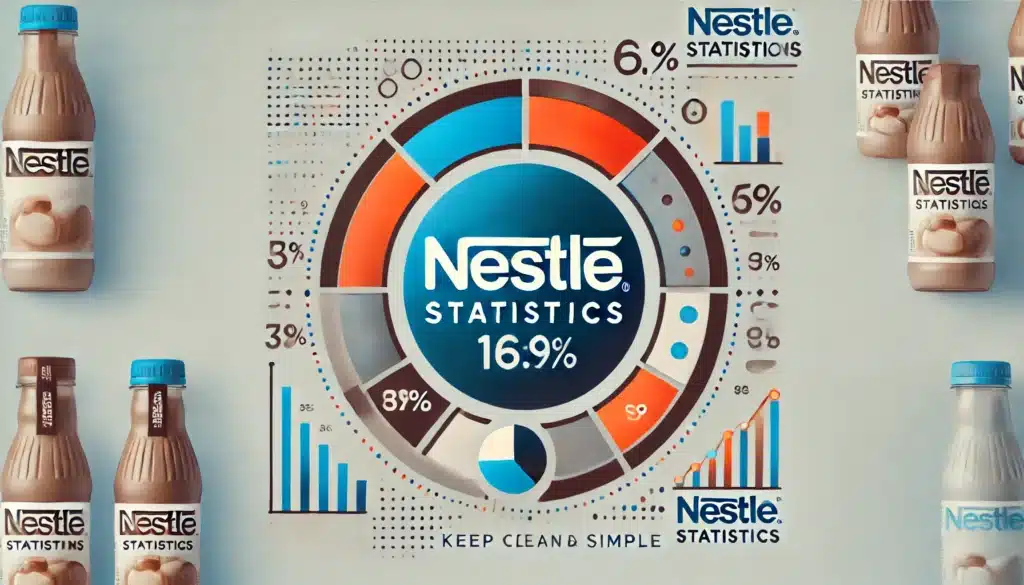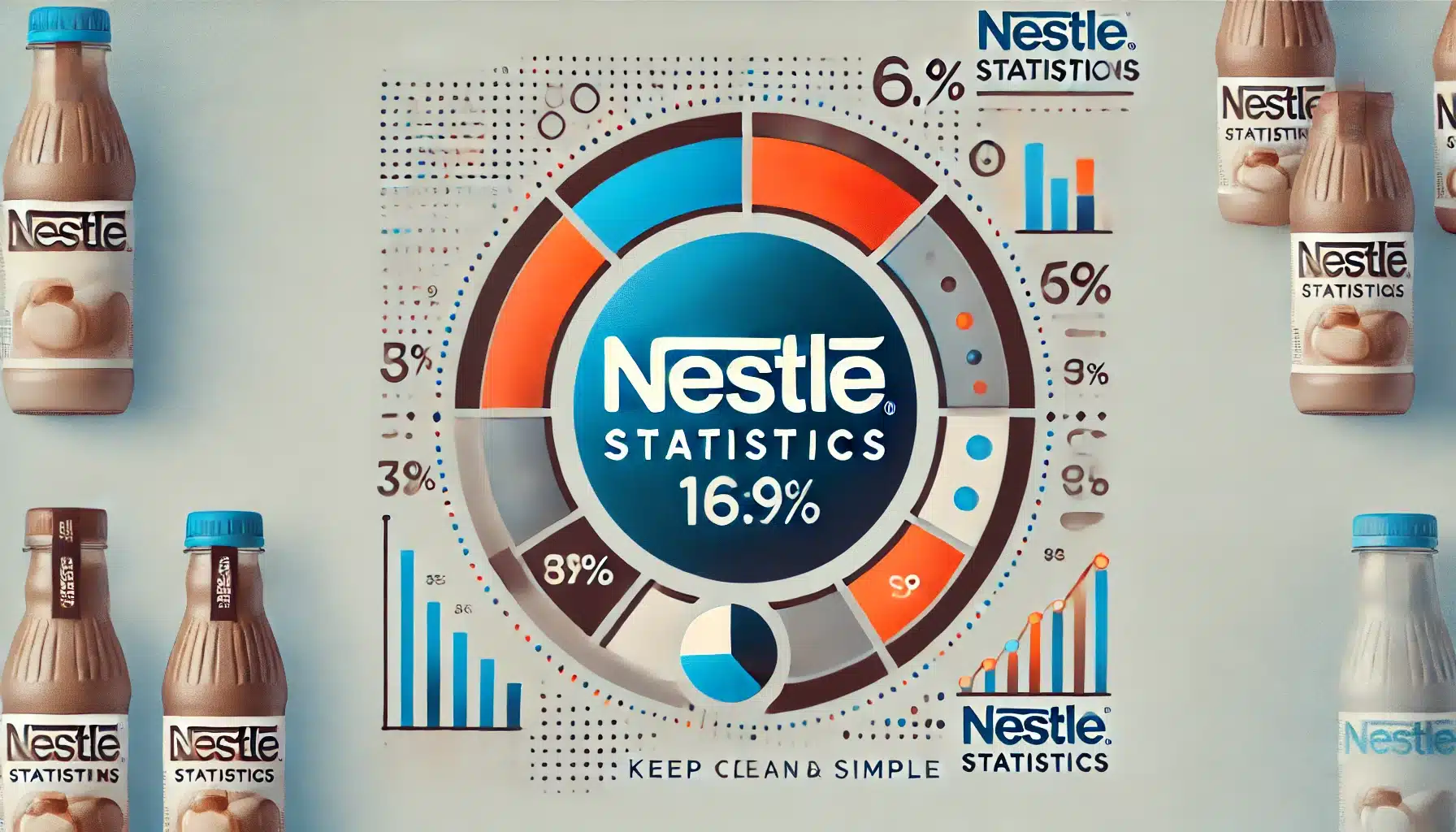
Nestle’s Net Worth: A Deep Dive into the Financial Giant
Nestle, the world’s largest food and beverage company, boasts a significant financial footprint. Understanding the net worth of Nestle requires a comprehensive analysis of its assets, liabilities, and overall market capitalization. This article provides an in-depth look at the factors contributing to Nestle’s impressive financial standing, offering insights into its business strategies and future prospects. The net worth of Nestle is not just a number; it’s a reflection of its global reach, brand recognition, and diverse product portfolio.
Understanding Nestle’s Financial Foundations
To grasp the magnitude of Nestle’s financial health, we must examine its key financial indicators. These include its total assets, liabilities, shareholder equity, and market capitalization. The net worth of Nestle is essentially the difference between its assets and liabilities, representing the company’s intrinsic value.
Assets: The Building Blocks of Nestle’s Wealth
Nestle’s assets are vast and varied, encompassing everything from its iconic brands to its state-of-the-art manufacturing facilities. These assets can be categorized as follows:
- Current Assets: These include cash, accounts receivable, and inventory. Nestle’s strong cash flow management ensures it has ample liquidity to meet its short-term obligations.
- Non-Current Assets: These consist of property, plant, and equipment (PP&E), as well as intangible assets such as trademarks, patents, and goodwill. Nestle’s extensive portfolio of brands, including Nespresso, Kit Kat, and Maggi, contributes significantly to its intangible asset value.
- Investments: Nestle holds investments in various companies and ventures, further diversifying its asset base.
Liabilities: Managing Nestle’s Financial Obligations
Like any large corporation, Nestle has liabilities, which represent its financial obligations to creditors and other parties. These liabilities can be broken down into:
- Current Liabilities: These include accounts payable, short-term debt, and accrued expenses. Nestle’s efficient supply chain management helps minimize its current liabilities.
- Non-Current Liabilities: These consist of long-term debt, deferred tax liabilities, and pension obligations. Nestle’s prudent financial planning ensures it can meet its long-term obligations without compromising its financial stability.
Factors Influencing Nestle’s Net Worth
Several factors play a crucial role in shaping the net worth of Nestle. These include:
Market Capitalization: Investor Confidence and Brand Value
Market capitalization, calculated by multiplying the company’s share price by the number of outstanding shares, reflects investor confidence in Nestle’s future prospects. A high market capitalization indicates strong investor sentiment and a positive outlook for the company’s growth. Nestle’s brand value, built over decades, significantly contributes to its market capitalization. [See also: Nestle’s Stock Performance]
Revenue and Profitability: The Engine of Growth
Nestle’s revenue, generated from the sale of its products and services, is a key driver of its net worth. Consistent revenue growth, coupled with strong profitability margins, enhances the company’s financial performance and attracts investors. Nestle’s diverse product portfolio and global presence enable it to generate significant revenue streams across various markets.
Strategic Acquisitions and Divestitures: Optimizing the Portfolio
Nestle actively manages its portfolio through strategic acquisitions and divestitures. Acquiring companies with complementary products or technologies can boost Nestle’s revenue and market share. Divesting non-core assets allows Nestle to focus on its core strengths and improve its overall profitability. These strategic moves directly impact the net worth of Nestle. [See also: Nestle’s Acquisition Strategy]
Economic Conditions: Navigating Global Challenges
Global economic conditions, such as inflation, currency fluctuations, and geopolitical events, can influence Nestle’s financial performance. Nestle’s diversified geographic footprint helps mitigate the impact of economic downturns in specific regions. However, significant global economic shocks can still affect the net worth of Nestle. The company’s ability to adapt to changing market conditions is crucial for maintaining its financial stability.
Estimating Nestle’s Net Worth: Challenges and Considerations
While publicly available financial data provides a basis for estimating Nestle’s net worth, several challenges and considerations must be taken into account:
Intangible Assets: Valuing Brand Equity
Valuing intangible assets, such as brand equity and intellectual property, can be complex and subjective. Nestle’s iconic brands, built over decades, represent a significant portion of its net worth, but accurately quantifying their value is challenging. Various valuation methods, such as discounted cash flow analysis and brand recognition studies, are used to estimate the value of Nestle’s intangible assets.
Currency Fluctuations: The Impact of Global Operations
Nestle operates in numerous countries and transacts in various currencies. Currency fluctuations can significantly impact the company’s reported financial results, making it difficult to accurately assess its net worth. Nestle employs hedging strategies to mitigate the impact of currency fluctuations, but these strategies cannot completely eliminate the risk. The net worth of Nestle, when expressed in a specific currency like USD, can vary depending on exchange rates.
Accounting Standards: Navigating Regulatory Differences
Different countries have different accounting standards, which can affect how Nestle reports its financial results. Nestle follows International Financial Reporting Standards (IFRS), but variations in interpretation and implementation can still exist. These differences can make it challenging to compare Nestle’s financial performance with that of other companies that follow different accounting standards. It’s important to consider these accounting nuances when analyzing the net worth of Nestle.
Nestle’s Net Worth: A Dynamic and Evolving Figure
The net worth of Nestle is not a static figure; it is constantly evolving in response to market conditions, business decisions, and global events. Monitoring Nestle’s financial performance requires a continuous assessment of its assets, liabilities, revenue, profitability, and strategic initiatives. Investors, analysts, and stakeholders closely track these factors to gauge Nestle’s financial health and future prospects.
Future Outlook: Growth Opportunities and Challenges
Nestle faces both growth opportunities and challenges in the coming years. The company is focused on expanding its presence in emerging markets, developing innovative products, and enhancing its sustainability efforts. However, Nestle also faces challenges such as increasing competition, changing consumer preferences, and regulatory pressures. Successfully navigating these challenges will be crucial for maintaining and growing the net worth of Nestle. The company’s commitment to innovation and sustainability will play a key role in its long-term success.
The Impact of Sustainability on Nestle’s Net Worth
Increasingly, sustainability initiatives are impacting a company’s financial standing. Nestle’s commitment to sustainable sourcing, reducing its environmental footprint, and promoting responsible consumption are becoming key factors in determining its long-term net worth. Consumers are increasingly demanding sustainable products, and companies that prioritize sustainability are likely to attract more customers and investors. [See also: Nestle’s Sustainability Initiatives]
Conclusion: Nestle’s Enduring Financial Strength
In conclusion, the net worth of Nestle reflects its enduring financial strength, global reach, and iconic brand portfolio. Understanding the factors that contribute to Nestle’s financial standing requires a comprehensive analysis of its assets, liabilities, revenue, profitability, and strategic initiatives. While estimating Nestle’s net worth involves challenges related to intangible assets, currency fluctuations, and accounting standards, the company’s consistent financial performance and strategic vision position it for continued success in the global food and beverage market. The net worth of Nestle is a testament to its long-term strategy and its ability to adapt to changing market conditions.
